Missed periods and stress fractures: Rachel Hannah’s story
One of Canada's top marathoners opens up about her experience
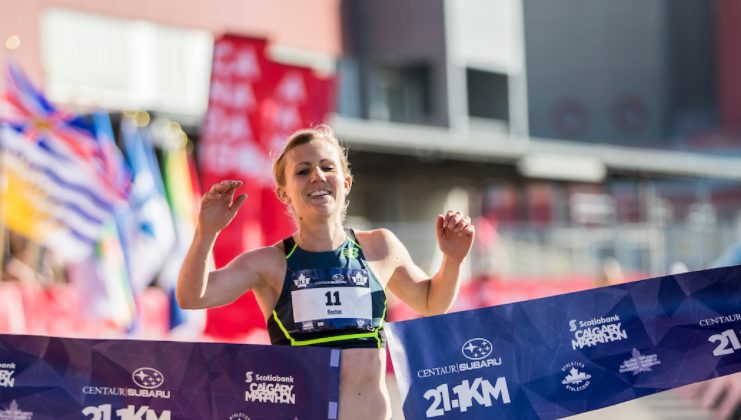
Between 2013 and 2017, Rachel Hannah, one of Canada’s best female marathoners, went through amenorrhea (loss of menstrual periods for at least three months), which led to diminished bone mineral density and a series of stress fractures that sidelined her from competition. After taking some time off to regain her health, she returned to the racing scene last year, confident that she could now compete successfully while avoiding the problems that had dogged her for the better part of four years. She offered to share her story with Canadian Running for the benefit of other athletes who may be experiencing similar challenges.
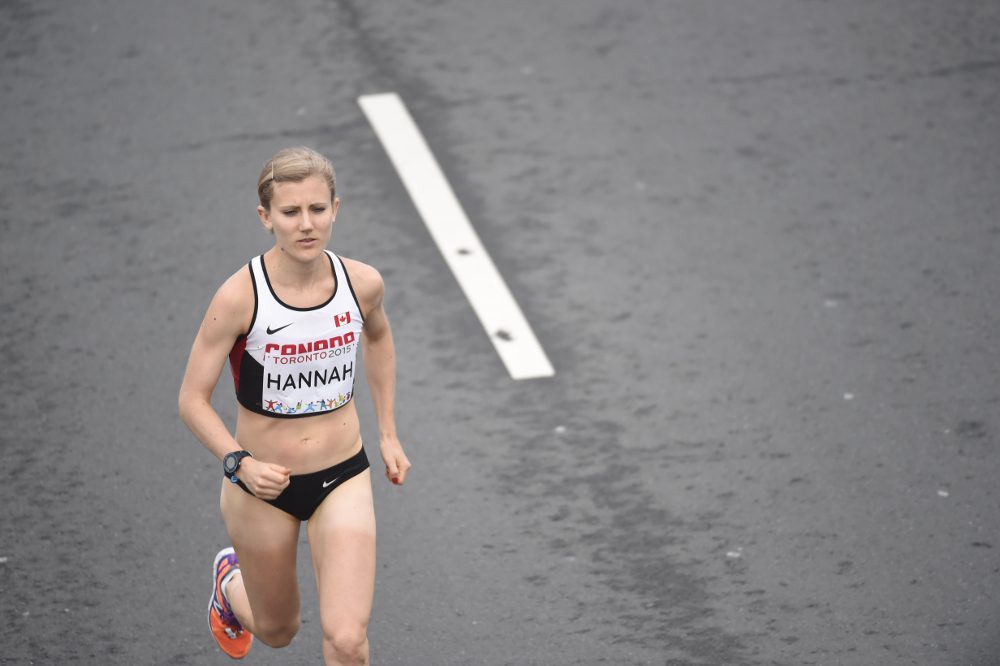
Hannah is a Pan Am Games bronze medallist in the marathon (2015), a five-time Canadian champion (road 10K, half-marathon, cross-country and 10,000m), a Canadian Marathon Championships silver medallist (2016), and has several top-Canadian marathon finishes. She is also a full-time Registered Dietitian at the University of Guelph’s Health and Performance Centre.
RELATED: Tina Muir’s struggle with amenorrhea described in new book
In 2013, Hannah was training and racing at peak intensity, and getting excellent results in 2014 and into 2015. At first she didn’t really think much of the fact that her period had disappeared, or that she was staying at her race weight even when she wasn’t racing.
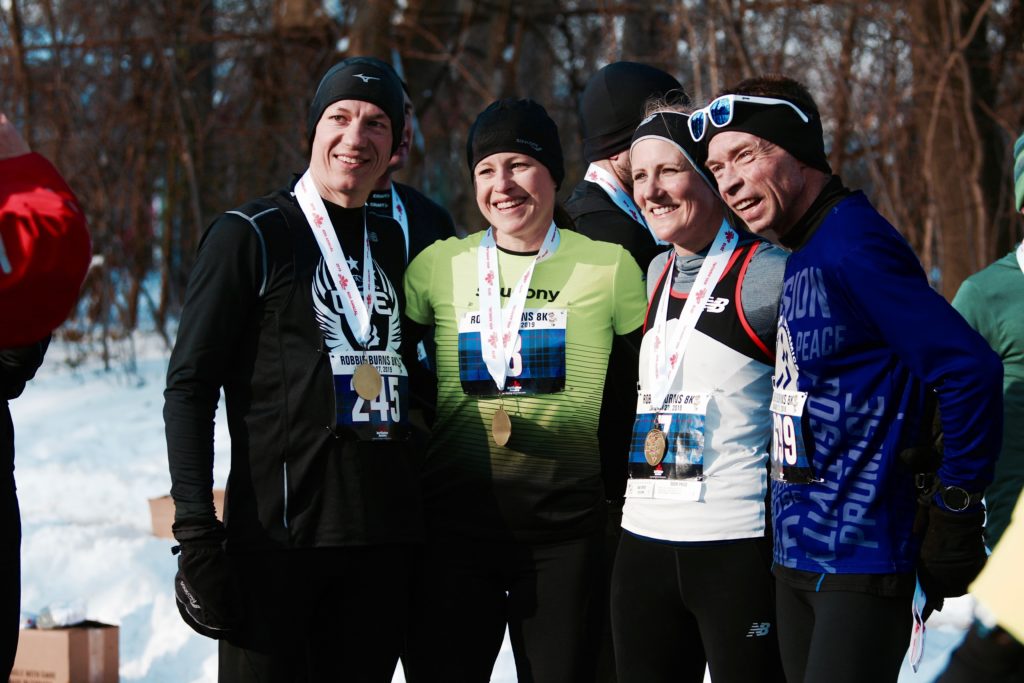
RELATED: VIDEO: Rachel Hannah after winning silver at Canadian Marathon Championships
Hannah had no periods at all between 2013 and 2017. And while that may sound like nirvana to some women, it’s a sure sign that your reproductive and bone health are at risk, and for athletes it carries a strong likelihood of bone stress injuries. “When your body is not getting enough calories to sustain a high level of activity, it starts to shut down processes that aren’t vital to survival, and one of those is reproduction,” Hannah explains.
“As a health professional, I knew it wasn’t healthy and that I was putting my bone health at risk, but it’s really hard when you’re setting PB’s and feeling awesome in training and racing. It’s hard to take a step back and say, I should probably gain weight because I’m not getting my period. I wasn’t getting injured until later.”
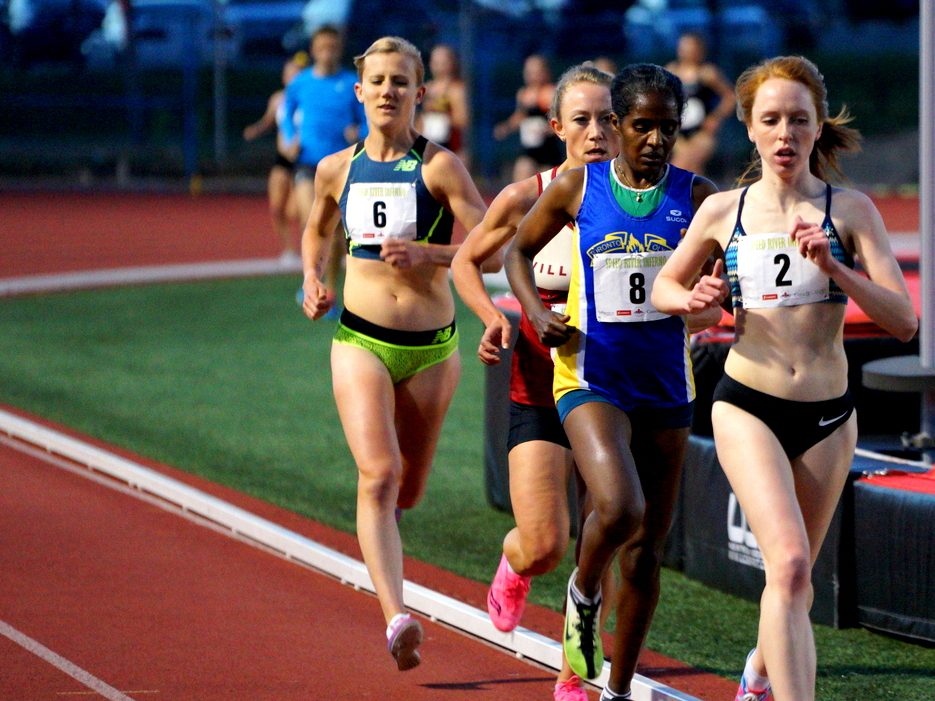
In 2015, Hannah moved up from shorter distances to the marathon, her first being the Scotiabank Ottawa Marathon. Then, she raced two more marathons in the space of one year (the Pan Am Games in 2015, where she earned the bronze medal, and Houston in 2016, where she set her PB of 2:32:09).
A couple of months later the problems started.
In 2016, she was supposed to go to the Half-Marathon World Championships in March, but was diagnosed with a stress fracture of the sacrum [the triangle-shaped bone in the lower back between the two hip bones]. She took two months off, then resumed training. In 2016 she ran the Scotiabank Toronto Waterfront Marathon and qualified for the world championships, this time in the marathon. On her last training run before worlds, she had pain the top of her right foot, but got on the plane anyway. It turned out she had a stress fracture in her fourth metatarsal.
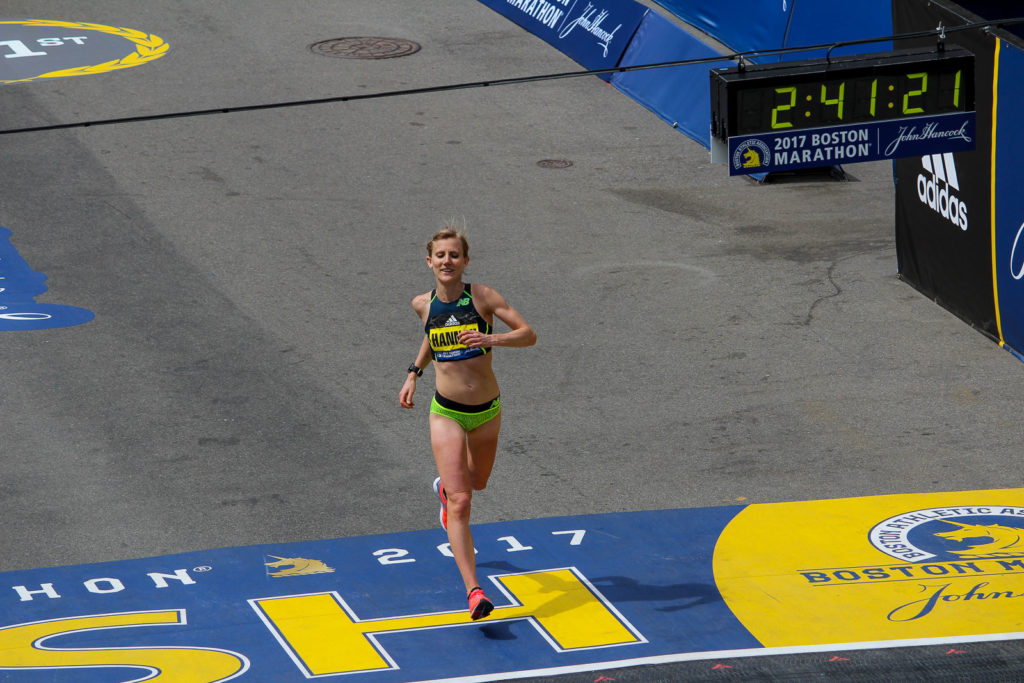
“I was diagnosed in Spain by our Team Canada doctor, Paddy McCluskey, who was so helpful in speaking to me in the right language and tone,” Hannah says. “I was really devastated–that would have been the biggest competition I’d ever been in. He told me I needed an MRI, and that I couldn’t start, because [the foot] would likely fracture and I could end up needing surgery.
“He talked to me about female health. One of the first questions he asked was… when’s the last time you had your period? Four years ago, I said. He looked at me in a caring way, talked to me about bone health, and said he had seen this with other athletes–that if they could get their periods back consistently, they’d come back and perform better. It really sank in that I needed to make changes, and that I needed to be OK with putting on weight, or I would have kept getting stress fractures.”
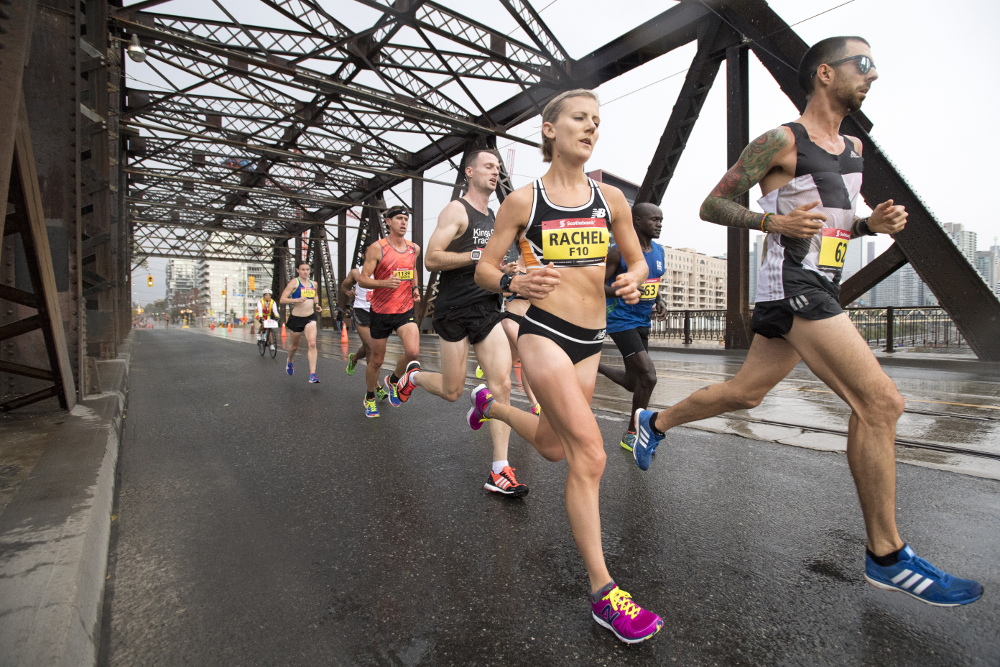
Hannah now sees clearly the link between losing her period, her low bone density (her first bone mineral density test, performed after her second stress fracture, revealed osteopenia, a precursor to osteoporosis), intense marathon training and racing, and the fact that she was not replacing the energy she was burning.
As a dietitian, Hannah knew exactly how many calories she was consuming, and she knew they weren’t adding up to what she needed to replace. Yet that knowledge alone wasn’t enough to influence her behaviour. It was only when her doctor expressed concern that she began to understand that her injuries were not random, and that they were directly linked to the loss of her period. (She also says that in marathon training, appetite may not be a good indicator of how much to eat, since your appetite may be suppressed after a workout.)
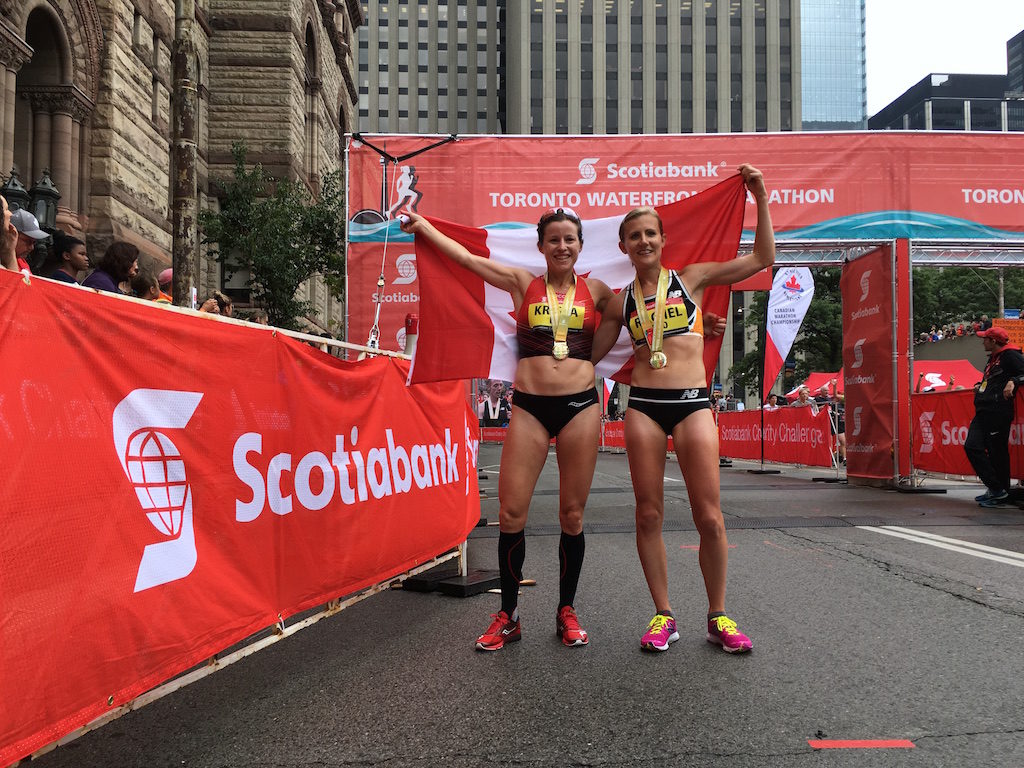
Hannah stopped running, and cross-trained in the pool. Her foot healed well, and she focused on resting and gaining enough weight to get her period back, which only took about three months. (Hannah cautions that for some people it can take longer.) But bone health can take longer to bounce back, and in November 2017 she was diagnosed with a stress reaction (the precursor to a fracture), this time in her left femur. She was forced to take more time off. At this point she seriously wondered if her career was over.
But she got through it, with the help of an incredible support team (including Margo Mountjoy of the University of Guelph’s Health and Performance Centre), cross-training to maintain her fitness. Her bone mineral density significantly improved from one year to the next.
Hannah is happy to report she’s had no further stress fractures, and her bone density has shown steady improvement. Last September’s Berlin Marathon (where Eliud Kipchoge set his extraordinary world record) was her first marathon in a year and a half, and though she wasn’t happy with her performance, she was convinced it was just an off day. Five weeks later, she raced the Scotiabank Toronto Waterfront Marathon, running 2:37, which was only nine seconds off qualifying for the world championships–still five minutes off her PB, but six minutes faster than her performance at Berlin. “I normally wouldn’t recommend racing again so soon,” she says, “but in this case I knew I’d had an off day and that my fitness was there, I just needed to put it together on race day.”
Most significantly, Hannah points out that when she raced Toronto she was about eight pounds heavier than what she had previously considered to be her race weight of 115-117 pounds (she is 5’4″). “You can still perform well, even with a bit more body fat and muscle,” she says. “You can meet your training needs and not get injured.” Her comments recall those of American marathoner Allie Kieffer, who has been very open about her own experience with weight loss, resulting injuries, and coming back to the marathon.
RELATED: “My weight has nothing to do with how good a runner I am,” says 2:29 marathoner
Hannah’s next race is this Sunday’ Banque Scotia 21K de Montreal. “The goal for Montreal is to get in a hard race effort and compete with the other women,” Hannah says. “I hope to better my time from last fall and work towards getting closer to my marathon PB.” For Hannah, the comeback goal is still faster times, good health and consistency.


